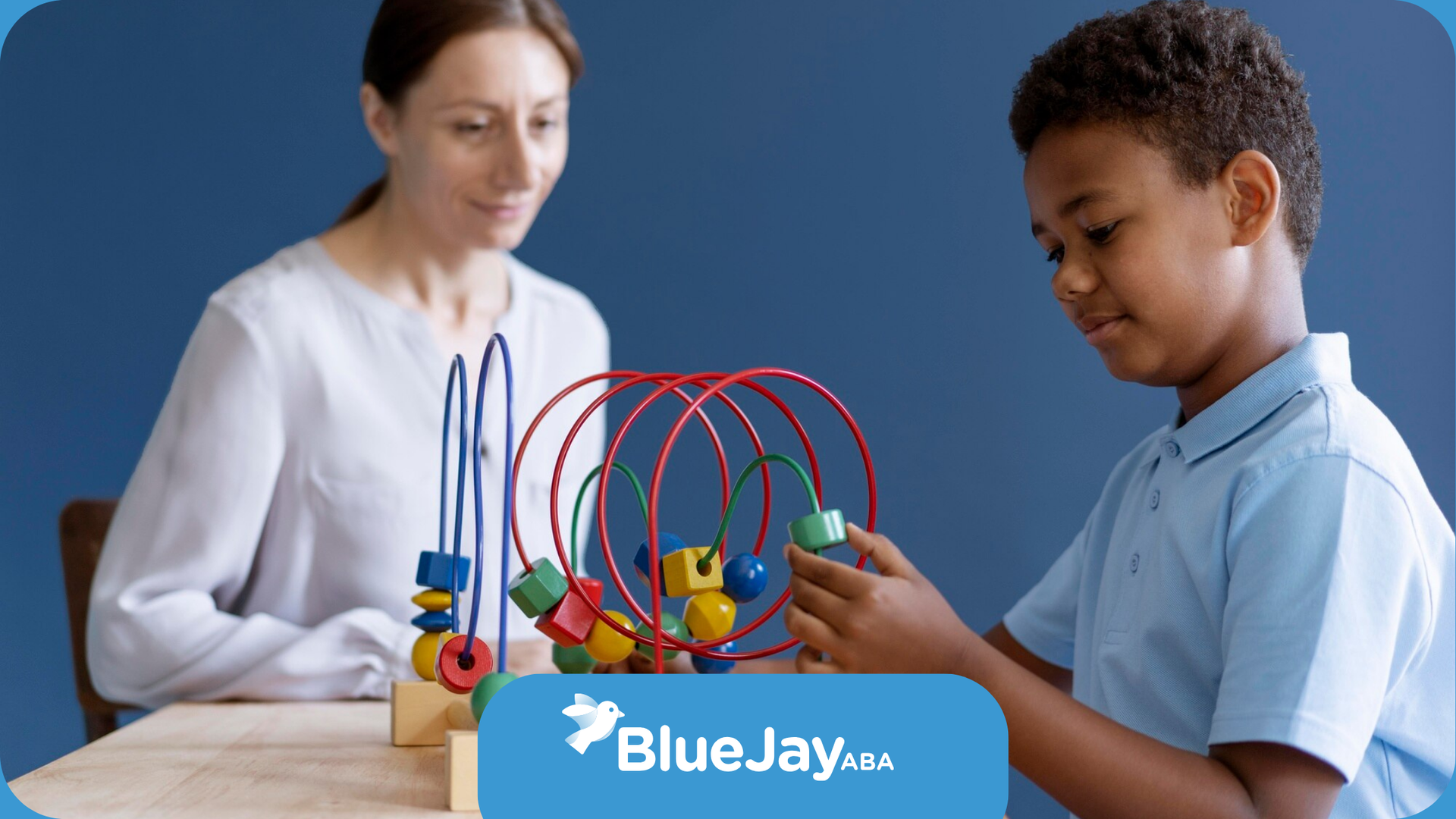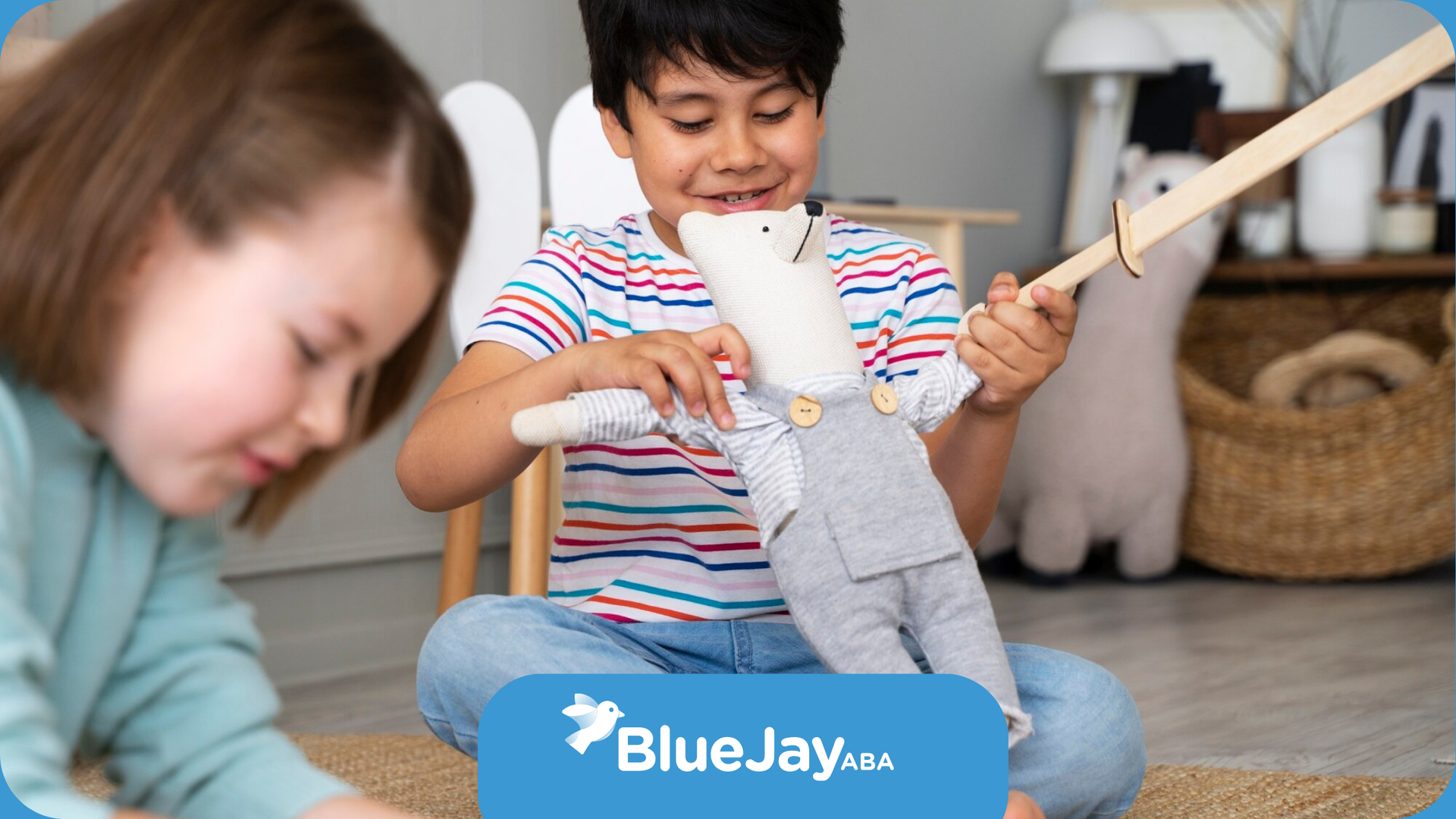Understanding Manding Definition: A Foundation in ABA
In Applied Behavior Analysis (ABA) therapy, good communication is very important. Understanding verbal behavior is key. This discussion focuses on "manding." Manding is a basic part of ABA that helps people, especially those with autism, to share their individual needs and wants clearly. When we learn about manding, we can open up new ways of communicating and create better interactions.
Exploring the Basics of Manding in ABA Therapy
Imagine a child pointing to a glass of juice and saying, "Juice." This shows what manding is all about. In ABA therapy, manding is a kind of verbal behavior that helps communicate the desired item. It happens when someone tells what they want or need directly. It focuses on expressing desires, not just naming things or reacting to what they see.
Manding is different from other ways of talking because it comes from motivation. The child asking for juice is not just naming the drink; he wants it to satisfy his thirst. This motivation makes manding a strong tool for shaping behavior and helping people become more independent.
Manding Definition and Its Role in ABA
At its core, manding means any way of asking for something. It can be verbal or nonverbal. For example, a child might simply say "toy" to get their preferred item or favorite item. A teenager could use sign language to ask for a break. The important part is the clear intention behind the request.
Manding is not just about getting what someone wants. It helps people learn key communication skills. For those with autism, who might struggle to express their needs, mand training is very important for their overall language development. ABA therapists teach them how to mand properly. This gives them tools to move through life with more independence and less frustration.
In behavior analysis, manding is a crucial idea. By looking at what happens before and after a mand, therapists can understand what motivates someone's behavior. This understanding helps in creating targeted plans and promoting good communication habits.
The Significance of Manding for Effective Communication
Manding is an important way for people to communicate. It helps them interact better with their surroundings. Unlike other passive ways of communicating, manding is considered a functional form of communication that lets individuals take charge. They can share their needs and influence what happens around them. This active participation is key to building independence and a sense of control.
Manding is also crucial for developing language skills. When children use mands to express their basic needs, they start to grow their vocabulary and learn grammar. This process moves from simple requests to more complicated sentences. It shows how important manding is for overall language growth.
In short, manding leads to clear and effective communication. When people can express what they need, they face fewer misunderstandings and frustrations. This helps reduce behavioral issues. With better communication, social interactions improve, learning gets better, and life quality increases.
Manding, a key concept in ABA therapy, plays a crucial role in developing communication skills by teaching individuals how to make requests effectively. Accessing in-home ABA therapy near me can provide personalized support to incorporate manding into daily routines, fostering practical communication skills in a familiar and comfortable setting. Start exploring local options today to enhance learning and growth at home!
What is an Example of a Mand?
Picture this: a child is playing with building blocks and is really focused on building a tower. Suddenly, the child needs another block to finish their creation. They look at their caregiver and say simply, "Block." This simple request shows a clear example of a mand.
Mands are special because they can change and adapt. You can express them not just with words but also with gestures, sign language, or other ways like the Picture Exchange Communication System (PECS). For instance, a child who points at a toy or shows a picture card to ask for a snack is also using manding.
Diving Deeper into Manding Techniques
Manding may seem easy at first glance, but teaching it takes different methods. You need to understand how the person learns best and what they find motivating. Then, you can use strategies that fit their needs.
ABA therapists use many ways to improve manding skills. They might use direct reinforcement or add visual aids to help. By splitting the process into smaller steps and rewarding successful attempts, people can slowly build confidence and learn to share their needs clearly.
Strategies for Enhancing Manding Skills
One of the best ways to improve manding skills is by using positive reinforcement. This means giving a reward right after someone shows the right behavior, such as high levels of praise. This helps make that behavior happen again. For example, if a child asks for a 'cookie' and gets it right away, this helps them learn that asking leads to getting what they want.
Also, using a child's favorite things or activities during mand training can really help their motivation. When kids like what they might get, they are more eager to speak up about what they want. For this, you could use a favorite toy during sessions or arrange fun trips to places the child likes.
It is very important to build good verbal skills for effective manding. But remember that manding isn’t only about speaking. It is also about helping those who can’t speak to use gestures, sign language, or other forms of communication. Making sure that our strategies fit different learners and skills allows everyone to gain from mand training.
Incorporating Visual and Verbal Cues in Mand Training
For people who learn best with visuals, using tools like the Picture Exchange Communication System (PECS) can make a big difference. PECS uses pictures or symbols to stand for things they want or activities they enjoy. Individuals learn to show these visual cues to a communication partner to ask for things. This approach helps them move from not speaking to using spoken language.
Visual cues are great reminders that help people link the symbol with the real item or action. For example, a child may want a break. At first, they might show a picture of a swing set to ask to go outside. Over time, they may use a card with the word "break" instead.
Combining visual cues with spoken prompts also makes learning more engaging. For example, when showing a picture of a juice box, a therapist might ask, "What do you want to drink?" This way, they strengthen the link between the picture, the spoken words, and the item they want, boosting their communication skills.
Tact vs. Mand
While manding focuses on requesting things, tacting involves labeling or identifying things. A child who sees a dog and says "dog" is tacting. They are not requesting the dog; they are simply labeling what they see. Both skills are crucial for communication, but they serve distinct purposes.
Here's a table to highlight the key differences:
| Feature | Mand | Tact |
|---|---|---|
| Purpose | To request | To label |
| Motivation | Driven by a want or need | Driven by sensory input |
| Example | "Juice" (wanting juice) | "Dog" (seeing a dog) |
Conclusion
Understanding manding in ABA therapy is very important. It helps with good communication and behavior development. Using visual and verbal cues can really improve manding skills. This is key for better communication, especially for children with autism. It teaches them to share their needs and wants clearly. The main aim of manding is to build a communication system. This system helps people talk and interact well in different settings. For more tips and ideas on how to get better at manding, check out our complete guide.
Blue Jay ABA in North Carolina is a trusted leader in fostering meaningful communication skills through foundational ABA concepts like manding. Their expert team tailors each program to meet individuals' unique needs, ensuring practical and effective learning experiences. Ready to unlock the potential of personalized ABA care? Contact Blue Jay ABA today and start building a stronger foundation for success!
Frequently Asked Questions
What is the primary goal of manding in ABA therapy?
The main goal of mand training in ABA therapy is to help individuals, especially those with communication difficulties, to ask for what they need and want. This is one of the first verbal behaviors they learn. This skill is very important because it reduces frustration, helps them be independent, and improves their quality of life. A behavior analyst is key in creating and training methods that fit the specific needs of each individual.
How does manding facilitate better communication in children with autism?
Manding is very important in ABA therapy for children with autism. It helps them to use communication to express their needs and wants. When children learn to mand, they can change their challenging behaviors into better ways to talk, reducing problematic behaviour. This leads to improved communication skills and helps them have more positive interactions with other people.
Can manding techniques be used at home?
Yes! Parents and caregivers can use mand training techniques at home. The main idea is to always respond to a child's requests with the desired item or action. After that, give them lots of praise. This high level of praise acts like a reinforcer. It helps strengthen the link between what they ask for and getting it. This encourages the child to keep using manding as a way to talk.
Related Posts








